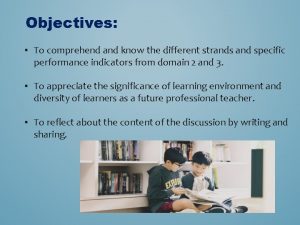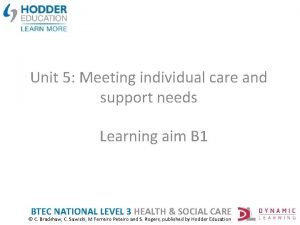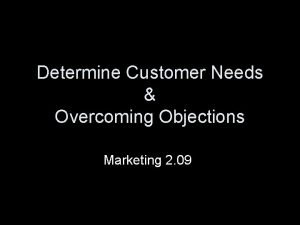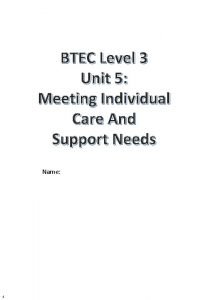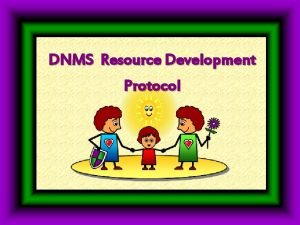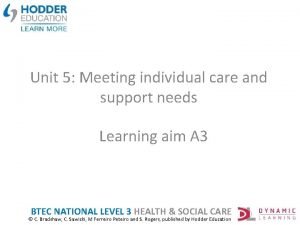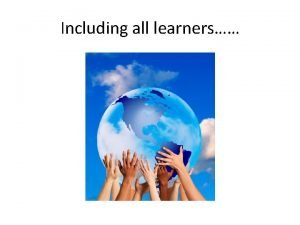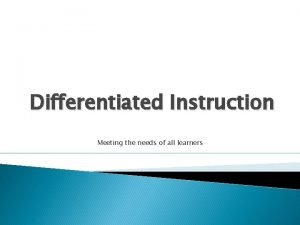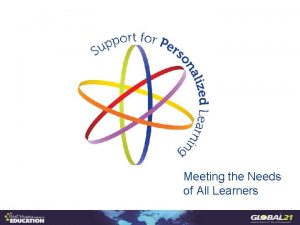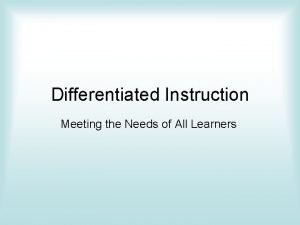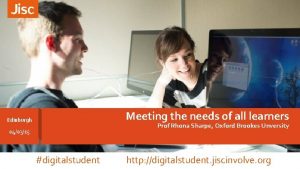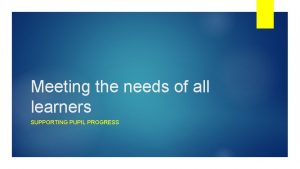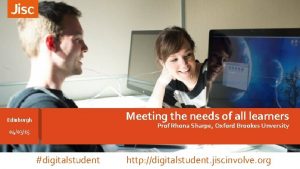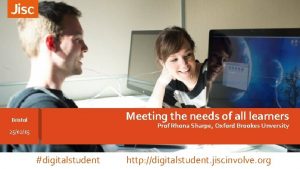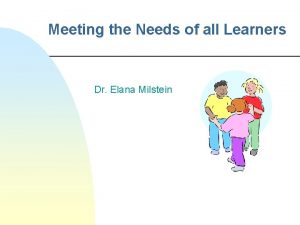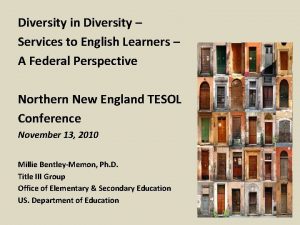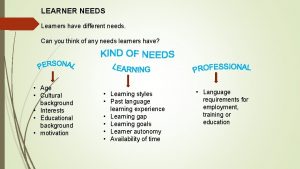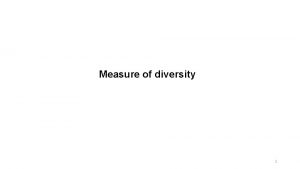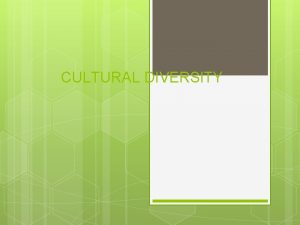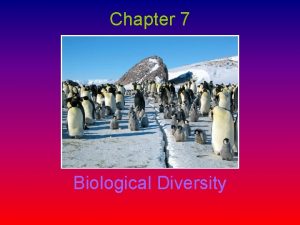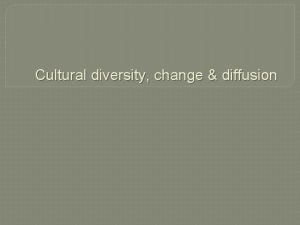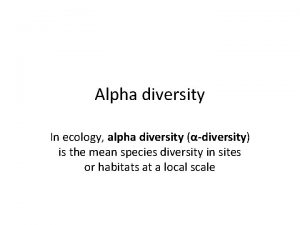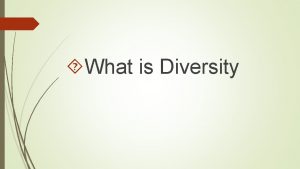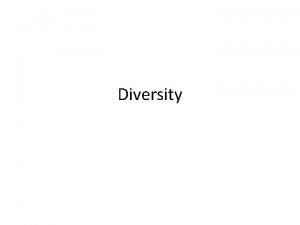Meeting the Needs of all Learners 1 Diversity























- Slides: 23

Meeting the Needs of all Learners 1

“Diversity has become the norm among the students in the classrooms of today” (Johnson, 1990) n n n Languages Families Cultural backgrounds Economics Experiential background 2

Student Diversity n n n Aptitude Achievement Interest Motivation Needs Ability 3

Paradigm Shift in Education: Curriculum Traditional n n n Major focus on content Content acquisition Lock step progress Evolving n n n Content & process balance Learning to learn Continuous progress 4

Instruction Traditional n n Teacher-centered Single textbook Single instructional approach Passive learning Evolving n n Child-centered Resource-based learning Multiple approaches to instruction Active learning 5

Environment Evolving Traditional n n Competitive System level management Supervision of learners Hierarchical structures n n Cooperative School-site management Empowerment of learners Professional/collegial structures 6

Students need to become … n n n Independent Active Self-organizing Responsible Empowered 7

Brain Research Confirms what teachers have always known: No two children are alike. n No two children learn in the identical way. n An enriched environment for one student is not necessarily enriched for another. n In the classroom we should teach children to think for themselves. --Marian Diamond n 8

Differentiation is a philosophy that enables teachers to plan strategically in order to reach the needs of diverse learners in the classrooms. 9

Differentiation IS NOT u Tracking u A New Strategy u Static u Teaching to the Middle u Synonymous with Individualization 10

Differentiate? What? Content & Materials Process & Strategies Assessment & Assignments Time Based on readiness and interests 11

12

Climate u Effective teachers believe that all children can learn and be successful. u Effective teachers create a climate where all students feel included. u Effective teachers feel that there is potential in each learner and commit to finding the key that will unlock that potential. 13

Knowing the Learner n n We need to know the learner so that we can make sure that the curriculum fits. We need to know how students access, process, and express informationu We need to know their learning styles. u We need to know their thinking styles. 14

Assessing the Learner n n Just as one size of learning doesn’t fit all, one size of assessment doesn’t suit either. We need to pre-assess the learner so that we can find out what they already know. We need to assess during the learning- use ongoing assessments. We need to assess after the learning. 15

Adjustable Assignments n n Allow teachers to help students focus on essential skills and understanding key concepts, recognizing that they may be at different levels of readiness. Students have the opportunity to develop essential skills and understanding at his or her appropriate level of challenge. 16

17

Instructional Strategies n Teachers who use a variety of instructional strategies add novelty, choice, and individuality to learning. F As teachers build their repertoire of instructional strategies, they will see how they can adjust the learning for a group of learners and how different strategies appeal to different learners. 18

Curriculum Approaches n Curriculum can be delivered in many ways so that it will appeal to individual learners u Centers or stations u Projects u Problem-based learning u Inquiry u Contracts 19

Adaptations in … n n n Content Process Product 20

Content n n n Multiple texts Varied time Contracts Compacting Group investigation 21

Process n n n Learning centers Multiple intelligences Graphic organizers Simulations Learning logs 22

Product n n n Independent study Community–based projects Multiple intelligence-based orientations Presentations Arts Multimedia 23
 Visual iconic learners
Visual iconic learners Diversity of learners
Diversity of learners Questioning and discussion techniques
Questioning and discussion techniques Why is genetic diversity important
Why is genetic diversity important Genetic diversity vs species diversity
Genetic diversity vs species diversity Diversity and human needs and development
Diversity and human needs and development Primary needs and secondary needs
Primary needs and secondary needs Satisfaction
Satisfaction Alpha press murray
Alpha press murray Strategic gender needs and practical gender needs
Strategic gender needs and practical gender needs Need analysis definition
Need analysis definition Name 3 points
Name 3 points Unit 5: meeting individual care and support needs
Unit 5: meeting individual care and support needs Examples of meeting individual needs
Examples of meeting individual needs Methods of meeting customer needs
Methods of meeting customer needs Chapter 10:2 physical changes of aging
Chapter 10:2 physical changes of aging Meeting the needs of guests with kindness and goodwill.
Meeting the needs of guests with kindness and goodwill. Unit 5 meeting individual care and support needs
Unit 5 meeting individual care and support needs Developmental needs meeting strategy
Developmental needs meeting strategy Martin hoffman empathy theory health and social care
Martin hoffman empathy theory health and social care Today meeting or today's meeting
Today meeting or today's meeting Today meeting or today's meeting
Today meeting or today's meeting What is meeting and types of meeting
What is meeting and types of meeting Types of meeting
Types of meeting

